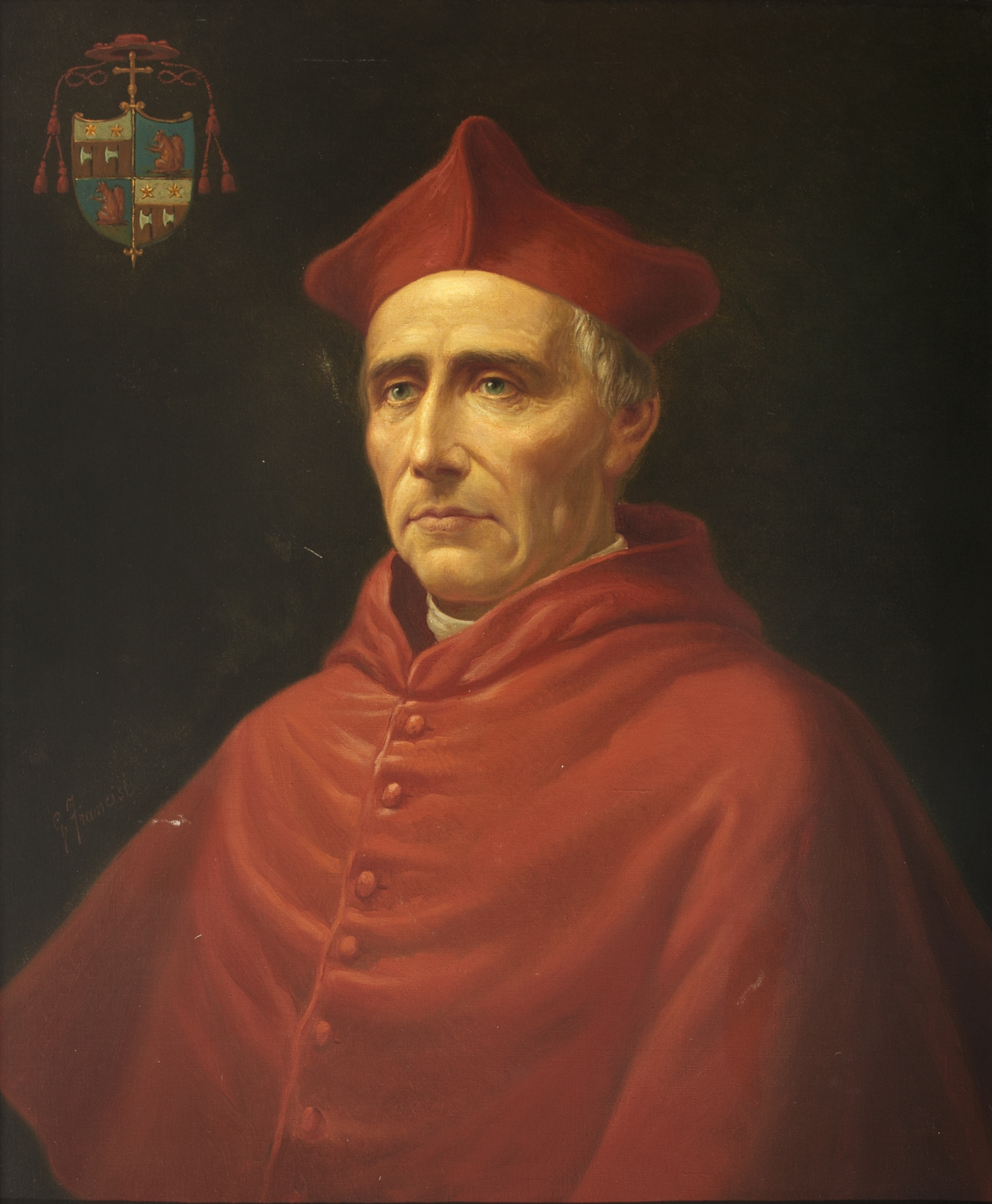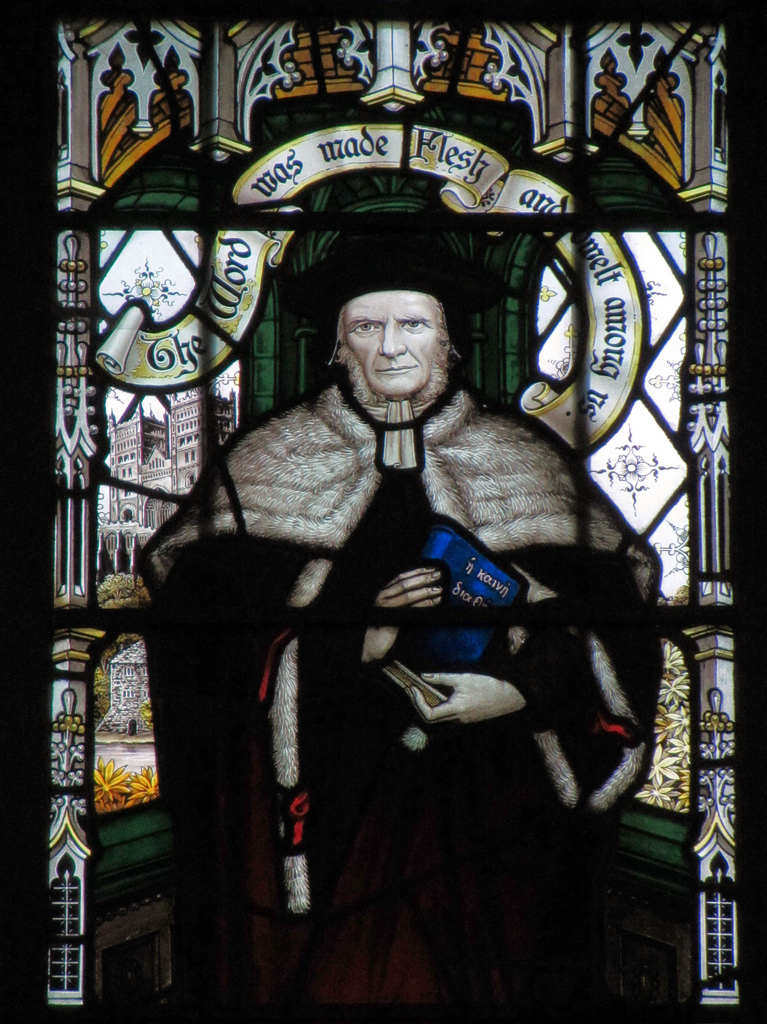|
Daniel Fox Sandford
Daniel Fox Sandford, (25 July 1831 – 20 August 1906) was the Anglican Bishop of Tasmania from 1883 until 1889. Life He was born in Glasgow on 25 July 1831 the son of Professor (later Sir) Daniel Kyte Sandford, professor of Greek at Glasgow University, and his wife "Miss Charnock". His paternal grandfather was Daniel Sandford, Bishop of Edinburgh. He studied Divinity at Glasgow University and was ordained in 1854. He was Chaplain to the Bishop of Edinburgh. During this time he lived at Ashfield Cottage on Greenhill Gardens in western Edinburgh. In 1864 he was elected a Fellow of the Royal Society of Edinburgh. His proposer was Peter Guthrie Tait. Subsequently a vicar, then canon within the Edinburgh area he was elevated to the colonial episcopate in 1883, with the title of Bishop of Tasmania. Returning to Great Britain six years later he became Rector of Boldon and coadjutor bishop to Joseph Lightfoot and Brooke Foss Westcott, two successive Bishops of Durham for ... [...More Info...] [...Related Items...] OR: [Wikipedia] [Google] [Baidu] |
Memorial To Rev Daniel Fox Sandford, St John's, Edinburgh
A memorial is an object or place which serves as a focus for the memory or the commemoration of something, usually an influential, deceased person or a historical, Tragedy (event), tragic event. Popular forms of memorials include landmark objects or works of art such as sculptures, statues or fountains and parks. Larger memorials may be known as monuments. Types The most common type of memorial is the Headstone, gravestone or the memorial plaque. Also common are War memorial, war memorials commemorating those who have died in wars. Memorials in the form of a cross are called intending crosses. Online memorials are often created on websites and social media to allow digital access as an alternative to physical memorials which may not be feasible or easily accessible. When somebody has died, the family may request that a memorial gift (usually money) be given to a designated Charitable organization, charity, or that a tree be planted in memory of the person. Those temporary or m ... [...More Info...] [...Related Items...] OR: [Wikipedia] [Google] [Baidu] |
Canon (priest)
A canon (from the Latin , itself derived from the Greek , , "relating to a rule", "regular") is a member of certain bodies in subject to an ecclesiastical rule. Originally, a canon was a cleric living with others in a clergy house or, later, in one of the houses within the precinct of or close to a cathedral or other major church and conducting his life according to the customary discipline or rules of the church. This way of life grew common (and is first documented) in the 8th century AD. In the 11th century, some churches required clergy thus living together to adopt the rule first proposed by Saint Augustine that they renounce private wealth. Those who embraced this change were known as Augustinians or Canons Regular, whilst those who did not were known as secular canons. Secular canons Latin Church In the Latin Church, the members of the chapter of a cathedral (cathedral chapter) or of a collegiate church (so-called after their chapter) are canons. Depending on ... [...More Info...] [...Related Items...] OR: [Wikipedia] [Google] [Baidu] |
Francis Sandford, 1st Baron Sandford
Francis Richard John Sandford, 1st Baron Sandford, (14 May 1824 – 31 December 1893), known as Sir Francis Sandford between 1863 and 1891, was a British civil servant. He was Permanent Under-Secretary of State for the Committee of Council on Education between 1870 and 1884, in which role he was instrumental in implementing the Elementary Education Act of 1870. Background and education The member of an old Shropshire family, Sandford was the son of Sir Daniel Sandford by Cecilia Catherine Charnock, daughter of John Charnock. He was the grandson of the Right Reverend Daniel Sandford, Bishop of Edinburgh, and the brother of Sir Herbert Sandford, Executive Commissioner to the Melbourne Exhibition of 1880, and the Right Reverend Daniel Sandford, Bishop of Tasmania. He was educated at the Glasgow High School, the Grange School at Sunderland, the University of Glasgow and as a Snell exhibitioner at Balliol College, Oxford, where he obtained a first class in '' Literae Humanio ... [...More Info...] [...Related Items...] OR: [Wikipedia] [Google] [Baidu] |
Edinburgh
Edinburgh ( ; gd, Dùn Èideann ) is the capital city of Scotland and one of its 32 Council areas of Scotland, council areas. Historically part of the county of Midlothian (interchangeably Edinburghshire before 1921), it is located in Lothian on the southern shore of the Firth of Forth. Edinburgh is Scotland's List of towns and cities in Scotland by population, second-most populous city, after Glasgow, and the List of cities in the United Kingdom, seventh-most populous city in the United Kingdom. Recognised as the capital of Scotland since at least the 15th century, Edinburgh is the seat of the Scottish Government, the Scottish Parliament and the Courts of Scotland, highest courts in Scotland. The city's Holyrood Palace, Palace of Holyroodhouse is the official residence of the Monarchy of the United Kingdom, British monarchy in Scotland. The city has long been a centre of education, particularly in the fields of medicine, Scots law, Scottish law, literature, philosophy, the sc ... [...More Info...] [...Related Items...] OR: [Wikipedia] [Google] [Baidu] |
Princes Street
Princes Street ( gd, Sràid nam Prionnsan) is one of the major thoroughfares in central Edinburgh, Scotland and the main shopping street in the capital. It is the southernmost street of Edinburgh's New Town, stretching around 1.2 km (three quarters of a mile) from Lothian Road in the west, to Leith Street in the east. The street has few buildings on the south side and looks over Princes Street Gardens allowing panoramic views of the Old Town, Edinburgh Castle, as well as the valley between. Most of the street is limited to trams, buses and taxis with only the east end open to all traffic. History 18th century The street lies on the line of a medieval country lane known as the Lang Dykes and under the first plan for the New Town was to have been called St Giles Street after the patron saint of Edinburgh. However, when King George III was shown a print or drawing of the proposed New Town by Sir John Pringle, he objected to the name as he associated it with the notor ... [...More Info...] [...Related Items...] OR: [Wikipedia] [Google] [Baidu] |
Assistant Bishop Of Durham
The Bishop of Durham is the Anglican bishop responsible for the Diocese of Durham in the Province of York. The diocese is one of the oldest in England and its bishop is a member of the House of Lords. Paul Butler has been the Bishop of Durham since his election was confirmed at York Minster on 20 January 2014.Archbishop of York – Bishop of Durham Election Confirmed (Accessed 20 January 2014) The previous bishop was , now Archbishop of Canterbury. The bishop is one of two (the other is the |
Bishop Of Durham
The Bishop of Durham is the Anglican bishop responsible for the Diocese of Durham in the Province of York. The diocese is one of the oldest in England and its bishop is a member of the House of Lords. Paul Butler has been the Bishop of Durham since his election was confirmed at York Minster on 20 January 2014.Archbishop of York – Bishop of Durham Election Confirmed (Accessed 20 January 2014) The previous bishop was Justin Welby, now Archbishop of Canterbury. The bishop is one of two (the other is the [...More Info...] [...Related Items...] OR: [Wikipedia] [Google] [Baidu] |
Brooke Foss Westcott
Brooke Foss Westcott (12 January 1825 – 27 July 1901) was an English bishop, biblical scholar and theologian, serving as Bishop of Durham from 1890 until his death. He is perhaps most known for co-editing '' The New Testament in the Original Greek'' in 1881. He was an enthusiastic supporter of the British Empire. Early life and education He was born in Birmingham. His father, Frederick Brooke Westcott, was a botanist. Westcott was educated at King Edward VI School, Birmingham, under James Prince Lee, where he became friends with Joseph Barber Lightfoot, later Bishop of Durham. The period of Westcott's childhood was one of political ferment in Birmingham and amongst his earliest recollections was one of Thomas Attwood leading a large procession of men to a meeting of the Birmingham Political Union in 1831. A few years after this Chartism led to serious disturbances in Birmingham and many years later Westcott would refer to the deep impression the experiences of tha ... [...More Info...] [...Related Items...] OR: [Wikipedia] [Google] [Baidu] |
Joseph Lightfoot
Joseph Barber Lightfoot (13 April 1828 – 21 December 1889), known as J. B. Lightfoot, was an English theologian and Bishop of Durham. Life Lightfoot was born in Liverpool, where his father John Jackson Lightfoot was an accountant. His mother, Ann Matilda Barber, was from a family of Birmingham artists. He was educated at King Edward's School, Birmingham, under James Prince Lee. His contemporaries included Brooke Foss Westcott and Edward White Benson. In 1847, Lightfoot went to Trinity College, Cambridge, and read for his degree along with Westcott. He graduated senior classic and 30th wrangler, and was elected a fellow of his college. From 1854 to 1859 he edited the ''Journal of Classical and Sacred Philology''. In 1857, he became tutor and his fame as a scholar grew. He was made Hulsean professor in 1861, and shortly afterwards chaplain to the Prince Consort and honorary chaplain in ordinary to Queen Victoria. In 1866, he was Whitehall preacher, and in 1871 he b ... [...More Info...] [...Related Items...] OR: [Wikipedia] [Google] [Baidu] |
Coadjutor Bishop
A coadjutor bishop (or bishop coadjutor) is a bishop in the Catholic, Anglican, and (historically) Eastern Orthodox churches whose main role is to assist the diocesan bishop in the administration of the diocese. The coadjutor (literally, "co-assister" in Latin) is a bishop himself, although he is also appointed as vicar general. The coadjutor bishop is, however, given authority beyond that ordinarily given to the vicar general, making him co-head of the diocese in all but ceremonial precedence. In modern times, the coadjutor automatically succeeds the diocesan bishop upon the latter's retirement, removal, or death. Catholic Church In the Catholic Church, a coadjutor is a bishop with papal appointment as an immediate collaborator of the diocesan bishop in the governance of a diocese, with authority to substitute for the diocesan bishop in his absence and right to automatic succession to the diocesan see upon death, resignation, or transfer of the incumbent diocesan bishop. ... [...More Info...] [...Related Items...] OR: [Wikipedia] [Google] [Baidu] |
Rector (ecclesiastical)
A rector is, in an ecclesiastical sense, a cleric who functions as an administrative leader in some Christian denominations. In contrast, a vicar is also a cleric but functions as an assistant and representative of an administrative leader. Ancient usage In ancient times bishops, as rulers of cities and provinces, especially in the Papal States, were called rectors, as were administrators of the patrimony of the Church (e.g. '). The Latin term ' was used by Pope Gregory I in ''Regula Pastoralis'' as equivalent to the Latin term ' (shepherd). Roman Catholic Church In the Roman Catholic Church, a rector is a person who holds the ''office'' of presiding over an ecclesiastical institution. The institution may be a particular building—such as a Church (building), church (called his rectory church) or shrine—or it may be an organization, such as a parish, a mission or quasi-parish, a seminary or house of studies, a university, a hospital, or a community of clerics or r ... [...More Info...] [...Related Items...] OR: [Wikipedia] [Google] [Baidu] |








